Westside Toastmasters is located in West Los Angeles and Santa Monica, California
Chapter 7
WHEN WE ARE TRYING TO DECEIVE OR ASSESS OTHERS

Just what is this no-nonsense business woman contemplating?
Deception Gestures
The problem with trusting body language as the sole source of information is that human beings are complex creatures. One gesture cannot and does not reveal an entire story any more than a book's message can be contained in one word. Context is key and even forensic professionals can be stumped when it comes to spotting the giveaways. That being said, by carefully watching for those uncontrolled gestures that appear when least expected, you may just be able to detect the deceiver.
Spotting deception is awfully difficult to do. If you know the person it's easier, but not foolproof. You can compare behaviors between how he acts when telling the known truth and when you think he may be attempting to lead you astray. Focus on a wide range of clues. If you think that just one single gesture is going to give the game away, you're just deceiving yourself.
If you told the absolute truth to everyone you interacted with, what would be the result? If you said the exact words going through your mind as you thought them, what consequences would it bring? Most of the lies people tell are not of the big, venal kind designed out of malice, but the "little white lie" variety often intended as a social lubricant with others and helps us maintain friendly relationships. People will exaggerate to build themselves up ("I once ran in the New York Marathon") or obfuscate to avoid tearing the other person down ("You look terrific in that dress"). If you told everyone the complete truth all the time, you would not only end up lonely, you might even end up in the hospital.
What is also surprising, considering the number of lies flying back and forth, is how poorly skilled people seem to be at recognizing them. Part of it is it's just easier to believe a story that sounds plausible than it is to continually check out it out. People seem to be automatically set with a "truth bias", where it is practically human nature to want to believe what other humans are saying. Social liars are also as indicated in studies, more popular than those who continually tell the truth ... even though we know the social liar is lying to us.
Lying Research
The least dependable signs of lying are the ones over which a person has the most control, such as words, because a person can rehearse their lies. According to study findings from researcher Robert Feldman at the University of Massachusetts in Amherst, people meeting for the first time will lie to each other at a rate two or three times for every 10 minutes of conversation. James Patterson, author of The Day America told The Truth, interviewed over 2000 Americans and found that 91% admitted to lying regularly both at home and at work. The most reliable clues to lying are the gestures a person makes automatically, because they have little or no control over them. These responses are most likely to happen during lies because they are emotionally the most important things to the liar.
So how can you tell when someone is lying, stalling or simply thinking it over? Distinguishing deceit, procrastination, boredom and evaluation gestures can be some of the most important observation skills you can learn. We will try in this section to help you learn the body language signals that give people away when they are being deceitful.
The Three Wise Monkeys
These monkeys symbolize those who hear no evil, see no evil and speak no evil. Their simple hand-to-face gestures form the basis of the human deceit gestures. In simple terms, when we see, speak and hear lies or deceit, we are likely to attempt to cover our mouth, eyes or ears with our hands.
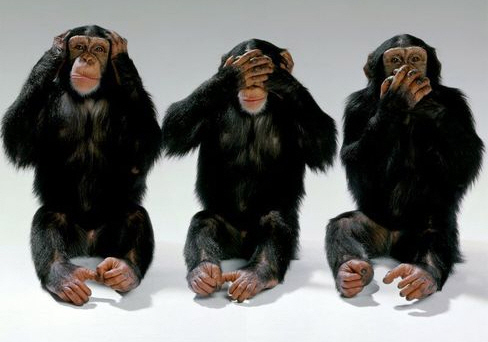
Hear no evil, see no evil, speak no evil
People who hear bad news or witness a horrific accident will often cover their entire face with their hands to symbolically stop themselves from seeing or hearing the awful news. This was the gesture that was most observed worldwide when people heard about the planes flying into the New York Twin Towers on September 11, 2001.
Children often use hand-to-face gestures openly when they lie. If a child tells a lie, he will often cover his mouth with one or both hands in an attempt to stop the deceitful words from coming out. If he doesn't want to listen to a reprimanding parent, he simply covers his ears with his hands to block out the noise. When he sees something he doesn't want to look at, he covers his eyes with his hands or arms. As he becomes older, these hand-to-face gestures become quicker and less obvious, but they still occur when he is lying, covering up or witnessing deceit.
These gestures are also associated with doubt, uncertainty or exaggeration. Desmond Morris conducted research in which nurses were instructed to lie to their patients about their health in a role-play situation. The nurses who lied showed a greater frequency of hand-to-face gestures than those who told the truth to the patients. Men and women also both increase their number of gulps of saliva when lying, but this is usually noticeable only with men, as they have an enlarged Adam's apple.
We will be discussing gestures individually and in isolation but that is not how they usually occur in real life. They are part of a larger gesture cluster and should be studied in the same way as words in a sentence, that is, how each word is relevant to other words and the overall context in which they are used. When someone uses a hand-to-face gesture, it doesn't always mean that he or she is lying. It does indicate, however, that the person could be holding back information and further observation of other gesture clusters can confirm or deny your suspicions. It's important that you avoid interpreting a single hand-to-face gesture in isolation.
While there is no single guaranteed movement, facial expression or twitch that confirms someone is telling a lie, there are several clusters you can learn to recognize which will dramatically increase your chances of spotting a lie.
Alteration And Suppression Of Facial Expressions
The face is used more than any other part of the body to cover up lies. We use smiles, nods and winks in an attempt to cover up, but unfortunately for us, our body signals will tell the truth and there is a lack of congruence between our body gestures and facial signals. Our attitudes and emotions are continually revealed on our faces and we are completely unaware of it most of the time.
When we're going to try to conceal a lie, or a certain thought flashes into our mind, it can be shown for a split second on our face. We usually interpret someone's quick nose touch as an itch, or that when they rest their hand on their face they are deeply interested in us, without ever suspecting that we're boring them to death.
A composed face, lacking expression, is the one that may be masking emotion. It's technique known as putting on a 'poker face' and is the easiest and most successful way of concealing what you'd rather not show. Narrowed eyes, a tense forehead, and tightened jaw muscles are small, subtle signs that an emotion is being suppressed.
Say you're at the funeral of a dear friend. While what you may really want to do is cry uncontrollably you feel it is inappropriate to expose your emotions openly. You voluntarily compose your facial expression, replacing your instinct to cry with a tight-lipped pose or even a slight smile as people pay their condolences. The giveaway signs are that your eyes are filled with mourning, your forehead is holding tension, and your smile is slightly contorted. Your lips may well tremble as you fight to contain your emotion and deceive others into thinking that you are bearing up well.
Women Have More Talent
Women are better at reading emotions, and therefore better at manipulating others with an appropriate lie. This trait is seen in baby girls who cry in sympathy with other babies and can then cause other babies to cry by simply bursting into tears at will. Sanjida O'Connell PhD, author of Mindreading, conducted a five-month study into how we lie and also concluded that women are far better liars than men. She found that women tell more complicated lies than men, whereas men tell simple lies such as 'My car ran out of gas' or 'My mobile phone battery died - that's why I couldn't call you.' She also found that attractive people are more believed than unattractive ones, explaining why leaders such as John F Kennedy and Bill Clinton were able to get away with as much as they did.
Why It's Hard to Lie
The difficulty with lying is that the subconscious mind acts automatically and independently of our verbal lie, so our body language gives us away. This is why people who rarely tell lies are easily caught, regardless of how convincing they may sound. The moment they begin to lie, their body sends out contradictory signals, and these give us a feeling that they are not telling the truth. During the lie, the subconscious mind sends out nervous energy which appears as a gesture that can contradict what was said. Professional liars, such as politicians, lawyers, actors and television announcers, have refined their body gestures to the point where it is difficult to 'see' the lie, and people fall for it, hook, line and sinker.
They do it in one of two ways. First, they practice what 'feel' like the right gestures when they tell the lie, but this only works when they have practiced telling a lot of lies over long periods of time. Second, they can reduce their gesturing so that they don't use any positive or negative gestures while lying, but that's also hard to do.
Try this simple test - tell a deliberate lie to someone face-to-face and make a conscious effort to suppress all body gestures Even when your major body gestures are consciously suppressed, numerous small micro-expressions will still be transmitted. These include facial muscular twitching, dilation and contraction of pupils, sweating, flushed cheeks, eye-blinking rate increasing from 10 blinks per minute to as many as 50 blinks per minute and many other micro-signals that indicate deceit. Research using slow-motion cameras shows that these micro-gestures can occur within a split second and it's only people such as professional interviewers, salespeople and the very perceptive who can read them.
It's obvious then, that to be able to lie successfully, you need to have your body hidden or out of sight. Interrogation involves placing the person on a chair in the open or placing him under lights with his body in full view of the interrogators; his lies are much easier to see under those circumstances. Lying is easier if you're sitting behind a desk where your body is partially hidden, peering over a fence or from behind a closed door. The better ways to lie are over phone texts, email, or lastly by voice on the phone.
Common Lying Gestures
1. Covering The Mouth
The hand covers the mouth as the brain subconsciously instructs it to try to suppress the deceitful, or in other cases unintended, words that are being said. Sometimes this gesture might only be several fingers over the mouth or even a closed fist, but its meaning remains the same.

Tom Hanks covering his mouth after unintentionally swearing on network TV
Some people try to disguise the covering the mouth gesture by giving a fake cough. When actors play gangsters or criminals, they often use this gesture when discussing criminal activities with other gangsters or when being interrogated by the police, so that the audience knows they're being secretive or dishonest.
If the person who is speaking uses this gesture, it indicates that they could be lying. If they cover their mouth while you are speaking, it can show they might feel you are hiding something. One of the most unsettling sights a conference speaker can see is his audience using this gesture while he's speaking. A speaker should stop and ask, 'Would someone like to ask a question?' or 'I can see some people disagree. Let's take questions.' This allows the audience's objections to be brought into the open, giving the speaker the opportunity to qualify statements and answer questions, just as he would do if they had their arms crossed.
Covering the mouth may appear in a lower key form as the 'Shhh' gesture where one finger is placed vertically over the lips. That could be a product of someone's parents using the gesture when he or she was a child. As an adult, the person uses it in an attempt to tell themselves not to say something they're feeling. The point is that it alerts you to something that is being withheld.
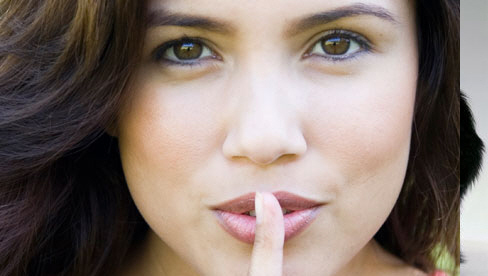
If your parents or minders used this gesture when you were a child, there's a good chance it's now in your adult repertoire
2. Touching The Nose
Sometimes the touching the nose can be several quick rubs below the nose or it may be one quick, almost imperceptible nose touch. Women perform this gesture with smaller strokes than men, perhaps to avoid smudging their make-up.
The important thing to remember is that this type of action should be read in clusters and in context; the person could have hay fever or a cold.

Megan Fox touching her nose
Scientists at the Smell and Taste Treatment and Research Foundation in Chicago found that when you lie, chemicals known as catecholamines are released, causing tissue inside the nose to swell. They used special imaging cameras that show blood flow in the body to reveal that intentional lying also causes an increase in blood pressure. This technology indicates that the human nose actually expands with blood during lying, and is known as the 'Pinocchio Effect'. Increased blood pressure inflates the nose and causes the nerve endings in the nose to tingle, resulting in a brisk rubbing action to the nose with the hand to satisfy the 'itch'.
You can't see the swelling with the naked eye but this is what appears to cause the Nose Touch gesture. The same phenomenon occurs when a person is upset, anxious or angry.
American neurologist Alan Hirsch and psychiatrist Charles Wolf did an extensive analysis of Bill Clinton's testimony to the Grand Jury on his affair with Monica Lewinsky and found that, when he told the truth, he rarely touched his nose. When he lied, however, he gave a split-second frown before he answered and touched his nose once every four minutes for a grand total of 26 nose touches. Conversely, Bill Clinton did not touch his nose at all when he answered truthfully, they said.
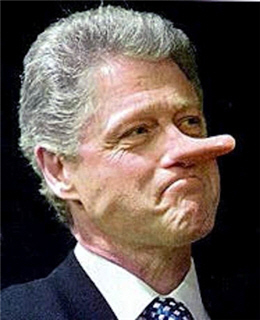
'I did not have sexual relations with that woman!'
3. What About an itchy Nose?
The itch of a person's nose is normally satisfied by a deliberate rubbing or scratching action, as opposed to the light strokes of the nose touch gesture. As with the Mouth Cover, the Nose Touch can be used both by the speaker to disguise his own deceit and by the listener who doubts the speaker's words. An itch is usually an isolated repetitive gesture and is incongruent or out of context with the person's overall conversation.
4. The Eye Rub
'See no evil,' said one of the wise monkeys. When a child doesn't want to look at something he'll cover his eyes with one or both hands. When an adult doesn't want to look at something distasteful, the eye rub is likely to occur.Rubbing eyes is the brain's attempt to block out the deceit, doubt or distasteful thing it sees, or to avoid having to look at the face of the person who is being lied to. Men usually rub their eyes vigorously and if the lie is a real whopper they will often look away. Women are less likely to use the Eye Rub - instead, they will use small, gentle touching motions just below the eye, because they either have been conditioned as girls to avoid making robust gestures, or to avoid smudging make-up. They also avoid a listener's gaze by looking away.
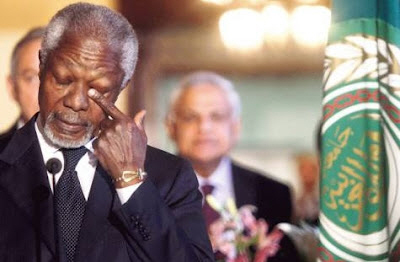
The rubbing of the eye and furrowing of the forehead suggest former UN General Secretary Kofi Annan has just heard or seen something he believes is deceptive.
'Lying through your teeth' is a commonly used phrase. It refers to a gesture cluster of clenched teeth and a false smile, combined with rubbing eyes. Actors often employ this gesture to portray insincerity.
5. The Ear Tug
Imagine you tell someone, 'It only costs $900 and the person tugs on their ear, looks away to the side and says, 'It sounds like a good deal to me.' This is a symbolic attempt by the listener to 'hear no evil': trying to block the words he is hearing by putting the hand around or over the ear or tugging at the earlobe. This is the adult version of a covering the ears gesture used by children who want to block out their parent's lectures. Other variations of tugging on the ear include rubbing the back of the ear, rubbing a fingertip back and forth inside the ear, pulling at the earlobe or bending the entire ear forward to cover the ear hole.
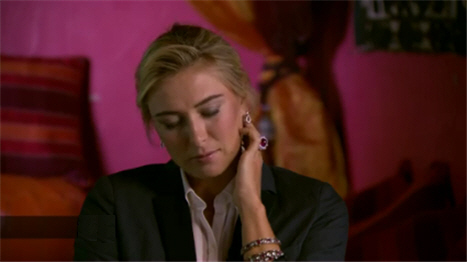
Tennis star Maria Sharapova answering a question about her perceived longevity on the tennis court. "Not something I want to think about
Tugging on an ear can also be a signal that the person has heard enough or may want to speak. As with touching the nose, tugging on the ear is used by a person who is experiencing anxiety. In Italy, however, this gesture is used to indicate that someone is effeminate or gay.
6. The Neck Scratch
The index finger -- usually of the writing hand -- scratches the side of the neck below the earlobe. Our observations of this gesture reveal the person scratches an average of five times. This gesture is a signal of doubt or uncertainty and is characteristic of the person who says, 'I'm not sure I agree.' It is very noticeable when the verbal language contradicts it; as an example when the person says something like, 'I can understand how you feel' but the Neck Scratch indicates they do not.
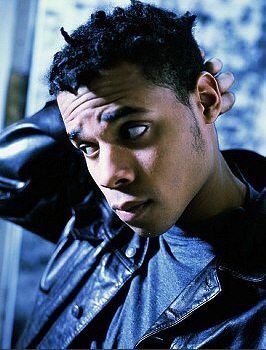
Showing uncertainty
7. Pulling The Collar
Desmond Morris was one of the first to discover that lies cause a tingling sensation in the delicate facial and neck tissues, and a rub or scratch was required to satisfy it. This not only accounts for why people who are uncertain will scratch their neck, it presents a good explanation as to why some people use the Collar Pull when they lie and suspect they have been caught out. Increased blood pressure from the deceit causes sweat to form on the neck when the deceiver feels that you suspect he's not telling the truth.
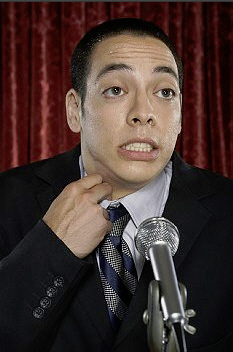
Getting hot under the collar
It also occurs when a person is feeling angry or frustrated and needs to pull the collar away from his neck in an attempt to let the cool air circulate. When you see someone use this gesture, ask, 'Could you repeat that, please?' or, 'Could you clarify that point, please?' This can cause the would-be deceiver to give the game away.
8. Fingers In The Mouth
This is an unconscious attempt by the person to revert to the security of the child sucking on his mother's breast and occurs when a person feels under pressure. A young child substitutes his thumb or a blanket for his mother's breast and, as an adult he puts his fingers to his mouth and sucks on cigarettes, pipes' pens and glasses, and chews gum.

Reassurance is needed
Most Hand-to-Mouth gestures can be connected to lying or deception but the Fingers-in-Mouth gesture is an outward indication of an inner need for reassurance so giving the person guarantees and assurances is a positive move.
Evaluation and Procrastination Gestures
A good speaker is said to be one who 'instinctively' knows when his audience is interested in what he's saying and can also tell when his listeners have had enough. A good salesperson senses when he is hitting his client's 'hot buttons' and finding out where the buyer's interest lies. Every presenter knows the empty feeling that results when he or she is giving a presentation to someone who says very little and just sits there watching. Fortunately, there are a number of Hand-to-Cheek and Hand-to-Chin gestures that can be used as a thermometer to test how hot or cold the other person's attitude is, and to tell the speaker how well he is doing.
Boredom
When the listener begins to use his hand to support his head, it is a signal that boredom has set in and his supporting hand is an attempt to hold his head up to stop himself from falling asleep. The degree of the listener's boredom is related to the extent to which his arm and hand are supporting his head. It usually begins with the chin being supported by the thumb and then by the fist as interest wanes. Extreme lack of interest is shown when the head is fully supported by the hand (see illustration), and the ultimate boredom signal occurs when the head is fully supported by the hands and snoring sounds are evident.
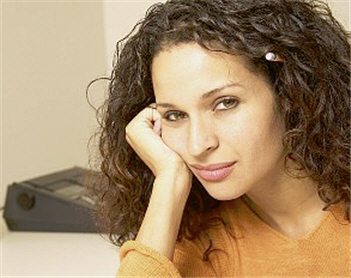
The hand supporting the head to stop from falling asleep
Drumming the fingers on the table and continual tapping of the feet on the floor are often misinterpreted by professional speakers as boredom signals, but in fact signal impatience. If you are addressing a group of people and see these signals, a strategic move must be made to get the finger drummer or foot tapper involved in the conversation to avoid his negative effect on the other listeners. Any audience that displays boredom and impatience signals together is telling the speaker that it is time for him to end.
The speed of the finger or foot tap is related to the extent of the person's impatience - the faster the taps, the more impatient the listener is becoming.
Evaluation Gestures
Evaluation is shown by a closed hand resting on the chin or cheek, often with the index finger pointing upwards. When the person begins to lose interest but still wants to appear interested for courtesy's sake, the position will alter so that the heel of the palm supports the head as boredom sets in.
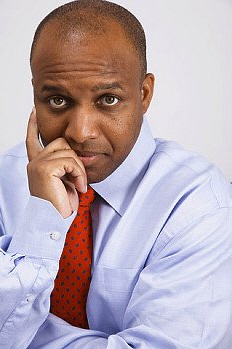
Interested evaluation - the head supports itself and the hand rests on the cheek
Middle managers often use this gesture to feign interest to the company president who is giving a dull, boring speech. Unfortunately for them, however, as soon as the hand begins to support the head in any way, it gives the game away and the president is likely to feel that some of the managers are being insincere or using false flattery.

Having negative thoughts
Genuine interest is shown when the hand lightly rests on the cheek and is not used as a head support. When the index finger points vertically up the cheek and the thumb supports the chin, the listener is having negative or critical thoughts about the speaker or his subject. Sometimes the index finger may rub or pull at the eye as the negative thoughts continue.

She's heard enough or is not impressed
This gesture is often mistaken as a signal of interest, but the supporting thumb under the chin tells the truth about the critical attitude. Holding a gesture cluster affects a person's attitude so the longer a person holds it, the longer their critical attitude will remain. This gesture cluster is a signal that immediate action is required by the speaker, either by involving the listener in what he is saying or by ending the encounter. A simple move, such as handing something to the listener to alter his Pose, can cause a change in attitude.
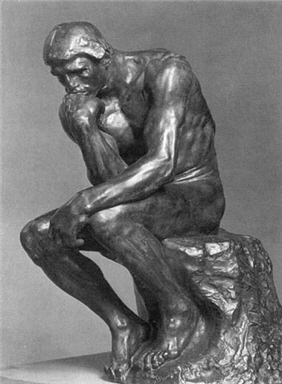
Rodin's The Thinker showed a thoughtful, evaluative attitude, but the body posture and hand supporting the head also reveal a dejected person
The Lying Interviewee
One time we had interviewed a man for a job who had arrived in the country from abroad. Throughout the interview he kept his arms and legs crossed, used critical evaluation clusters, had very little palm use and he looked away frequently. Something was obviously worrying him, but in the early stages of the interview there was inadequate information to accurately assess his negative gestures. Questions were asked about his previous employers in his homeland. His answers included a series of eye-rubbing and nose-touching gestures and he continued to look away. The decision was made not to hire him, based on what we had seen as opposed to what he had said. Curious about his apparent deceit gestures, we checked with his overseas references, discovering that he had lied on several aspects concerning his past employment. He probably assumed that a potential employer would not bother to check overseas references. Without an awareness of the body language cues and signals, a bad hire could easily have been made.
Chin Stroking
The next time you have the opportunity to present an idea to a group of people, watch them carefully as you give your idea and you may notice that most will bring one hand up to their face and use an evaluation gesture. When you come to the end of your presentation and ask the group to give opinions or suggestions about your ideas, the evaluation gestures will usually stop and a chin stroking gesture begins. This chin stroke is the signal that the listener is going through the decision-making process.

Elon Musk thinking
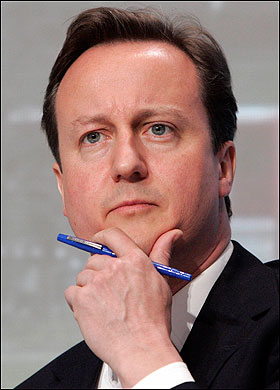
Thinking about it and making a decision
When you've asked the listeners for their decision and they start chin stroking, their next gestures will signal whether their decision is negative or positive. Your best strategy is to stay quiet and watch their next gestures, which will indicate the decision reached. For example, if the chin stroke is followed by crossed arms and legs and the person sits back in their chair, it's a fair bet the answer will be 'no'. This gives you an early opportunity to resell the benefits before the other person verbalizes 'no' and makes it harder to reach agreement.
If the Chin Stroke is followed by leaning forward with arms open or picking up your proposal or sample, chances are you have a 'yes' and can proceed as if you have agreement.
Stalling Clusters
Someone who wears glasses sometimes follows an evaluation cluster by taking off their glasses and putting one arm of the frame in the mouth instead of using the Chin Stroke when making their decision. A cigarette smoker will take a puff of smoke. When a person puts a pen or a finger in their mouth after you've asked for a decision, it's a signal that he is unsure and reassurance is needed. The object in the mouth allows him to stall and not feel any urgency in giving an immediate response.
Sometimes boredom, evaluation and decision-making gestures come in combinations, each showing different elements of the person's attitude.
The next image shows the evaluation gesture moved to the chin, and the hand may also be stroking the chin. This person is evaluating the proposition and drawing conclusions simultaneously.
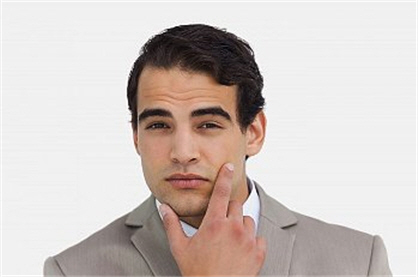
Evaluation / decision-making cluster
When the listener begins to lose interest in the speaker, the head begins to rest on the hand. The subsequent image shows evaluation with the head supported by the fingers as the listener becomes less interested.
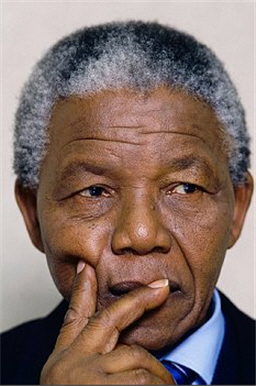
Nelson Mandela evaluating or making a decision, and perhaps slightly bored

Gavin Newsom pondering the political currents
Head Rubbing and Slapping Gestures
When you say someone 'gives you a pain in the neck', you are referring to the ancient reaction of the tiny erector pillae muscles on the neck - often called goosebumps - attempting to make your non-existent fur pelt stand on end to make yourself appear more intimidating because you are feeling threatened or angry. It's the same hair-raising reaction an angry dog has when it's confronted by another potentially hostile dog. This reaction causes the tingling feeling you experience on the back of your neck when you feel frustrated or fearful. You'll usually rub your hand over the area to satisfy the sensation.
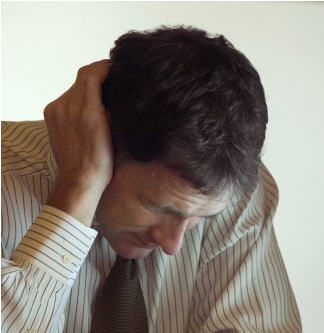
'Pain in the neck' gesture
Let us assume, for example, that you asked someone to do a small favor for you and that they had forgotten to do it When you ask them for the result, they slap either their forehead or back of the neck, as if they were symbolically beating themselves. Although slapping of the head is used to communicate forgetfulness, it's important to watch whether they slap the forehead or neck. If they slap their forehead, they signal that they are not intimidated by you mentioning their forgetfulness. When they slap the back of the neck to satisfy the raised erector pillae muscles, however, it tells you that you are literally a 'pain-in-the-neck' for mentioning it. If the person slaps their rear end however...
Gerard Nierenberg, of the Negotiation Institute in New York, found that those who habitually rub the back of the neck have a tendency to be negative or critical, whereas those who habitually rub their foreheads to non-verbalize an error tend to be more open and easy-going.
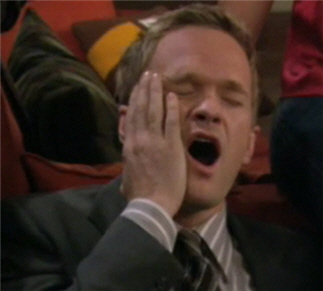
Personal punishment by slapping oneself
Acquiring the ability to interpret hand-to-face gestures accurately in a given set of circumstances takes time and observation. When a person uses any of the hand-to-face gestures discussed in this chapter, it's reasonable to assume a negative thought has entered his mind. The question is, however, what is the negative thought? It could be doubt, deceit, uncertainty, exaggeration, apprehension or outright lying. The real skill is the ability to interpret which negative is the correct one. This can best be done by an analysis of the gestures preceding the hand-to-face gesture and interpreting it in context.
Why Adam Always Lost at Chess
A friend, Adam, enjoys playing chess. We challenged him to a game and secretly took a video for later analysis of his body language. The video revealed that Adam often rubbed his ear or touched his nose during the game, but only when he was unsure of his next move. When we signalled an intention to move a chess piece by touching it, Adam's body language would signal what he thought about the proposed move. If he felt he could beat a move, and had probably already thought of a counter move, he'd signal his confidence by Steepling; when he was uncertain or unhappy he'd use the Mouth Cover, Ear Pull or Neck Scratch. This happened with such predictability that for sport we secretly explained Adam's tells to the other members of the chess group. Soon most in the group could beat poor Adam by anticipating his thoughts from his body language. Adam was not a happy guy, becoming mystified by his sudden loss of chess playing prowess.
The Double Meaning
During a simulated role-play interview, an interviewee suddenly covered his mouth and rubbed his nose after he had been asked a question by the interviewer. He used the Mouth Cover for several seconds before answering, then returned to his open pose. Up to that point in the role-play, the interviewee had kept an open posture, palms visible, nodding his head and leaning forward when he answered questions, so we thought the gestures might have been isolated or out of context. On reviewing a video taken of the interview, we asked him about the hand-to-mouth gesture and he said that when he was asked the question, he thought he could have responded in two ways: one negative, one positive. As he thought about the negative answer and of how the interviewer might react to it, he covered his mouth. When he thought of the positive answer, however, his hand dropped away from his mouth and he resumed an open posture. His uncertainty about the interviewer's possible reaction to the negative reply had resulted in the sudden Mouth Cover.
This illustrates how easy it can be to misinterpret a hand-to-face gesture and to jump to wrong conclusions.



